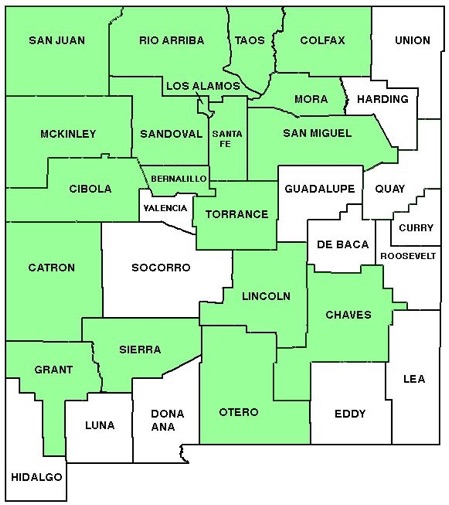WILDFLOWERS OF NEW MEXICO

With branching stems to 4-feet tall and spreading (creeping), budding roots, this alien from Europe is classified as a noxious weed for good reasons. A single plant can form a colony up to 115 feet in diameter with roots reaching 22-feet deep. Note the small flower heads with thread-like, purple flowers and purple-tinged phyllaries tipped with tiny spines. Also called Canada Thistle.
FLOWER: June–October. Small, egg-shaped flower heads 3/8–1-inch long (1–3 cm), each flower head either male or female with pink to purple, filament-like disk flowers (no ray flowers); phyllaries often purple-tinged, tipped with tiny spines.
LEAVES: Alternate; basal leaves absent at flowering. Blade highly variable, oblong to elliptic, 1 1/4–12-inches long (3–30 cm); margins spiny, lobed or unlobed, flat or wavy; upper surface hairless to thinly hairy, bottom hairless to densely gray-woolly.
HABITAT: Sandy, gravelly, clay loam soils, roadsides, pastures, disturbed areas; brushlands, pinyon-juniper, ponderosa-Douglas fir woodlands.
ELEVATION: 4,200–9,600 feet.
RANGE: Widespread throughout western and northern U. S.
SIMILAR SPECIES: 12 species of Cirsium in NM, 5 in 3 or less counties, and two introduced. The small, unisexual flower heads and purple-tinged phyllaries with tiny spines distinguish this species.
NM COUNTIES: Widespread in NM in mid- to high-elevation, disturbed habitats: Bernalillo, Catron, Chaves, Cibola, Colfax, Grant, Lincoln, Los Alamos, McKinley, Mora, Rio Arriba, San Juan, San Miguel, Sandoval, Santa Fe, Sierra, Taos, Torrance.









CREEPING THISTLE
CIRSIUM ARVENSE
Aster Family, Asteraceae
Perennial herb; introduced invasive weed



























THE CONTENTS OF THIS WEBSITE ARE COPYRIGHTED AND CANNOT BE USED
WITHOUT PERMISSION OF GEORGE OXFORD MILLER

















Range Map for
Cirsium arvense








EMAIL ME







